TIDA029A july 2019 – june 2023 CC2640R2F-Q1 , CC2642R , CC2642R-Q1
- 1
- Bluetooth Angle of Arrival (AoA) Antenna Design
- Trademarks
- 1Introduction
- 2Angle of Arrival Antenna Design Considerations
- 3Dipole Antenna Array
- 4Calculating AoA From IQ Measurements
- 5References
- 6Revision History
3.4.1 Total Radiated Power (TRP)
All radiation measurements are done on a TIDA-01632 PCB without any absorbing material or copper foil attached. The CC2640R2F-Q1 device on the TIDA-01632 is configured to output a constant wave at 2440 MHz with 0 dBm. The measured total radiated power (TRP) is –8.71 dBm and –8.97 dBm giving an antenna efficiency of around 14% (0.3 dB loss in the RF switch - SKYA21001). In the following measurements, the z-axis is perpendicular to the PCB, with the x-axis as the height and the y-axis as the length shown in Figure 3-16.
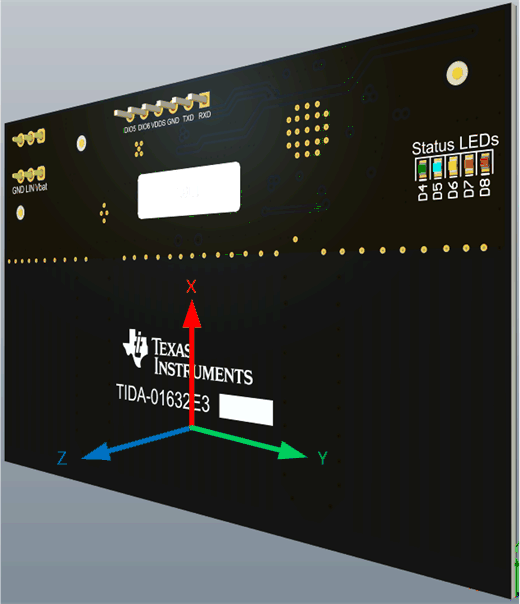 Figure 3-16 PCB Orientation for TRP
Results
Figure 3-16 PCB Orientation for TRP
ResultsIn the total radiated power plots, Theta represents the rotation of the PCB from the z-axis to the y-axis (turntable base rotating) and Phi represents the z-axis to the x-axis (rotating the arm from Figure 3-14).
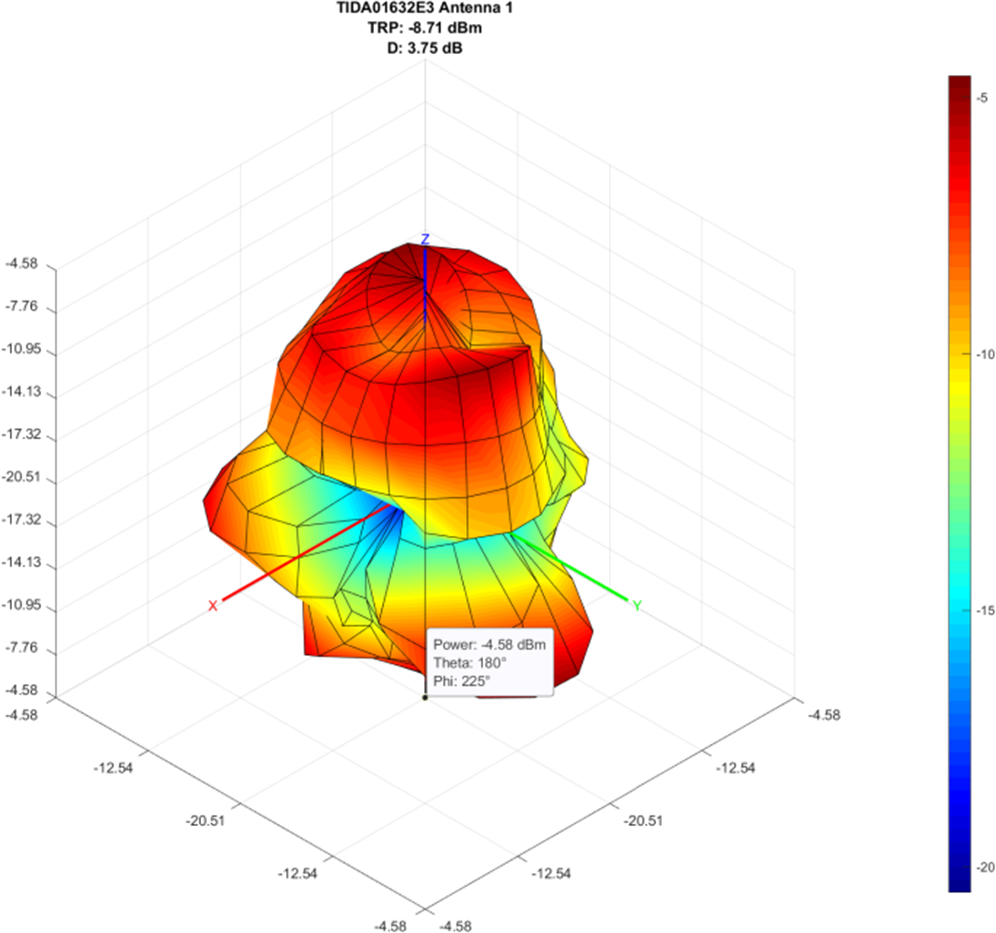 Figure 3-17 Antenna 1 TRP
Figure 3-17 Antenna 1 TRP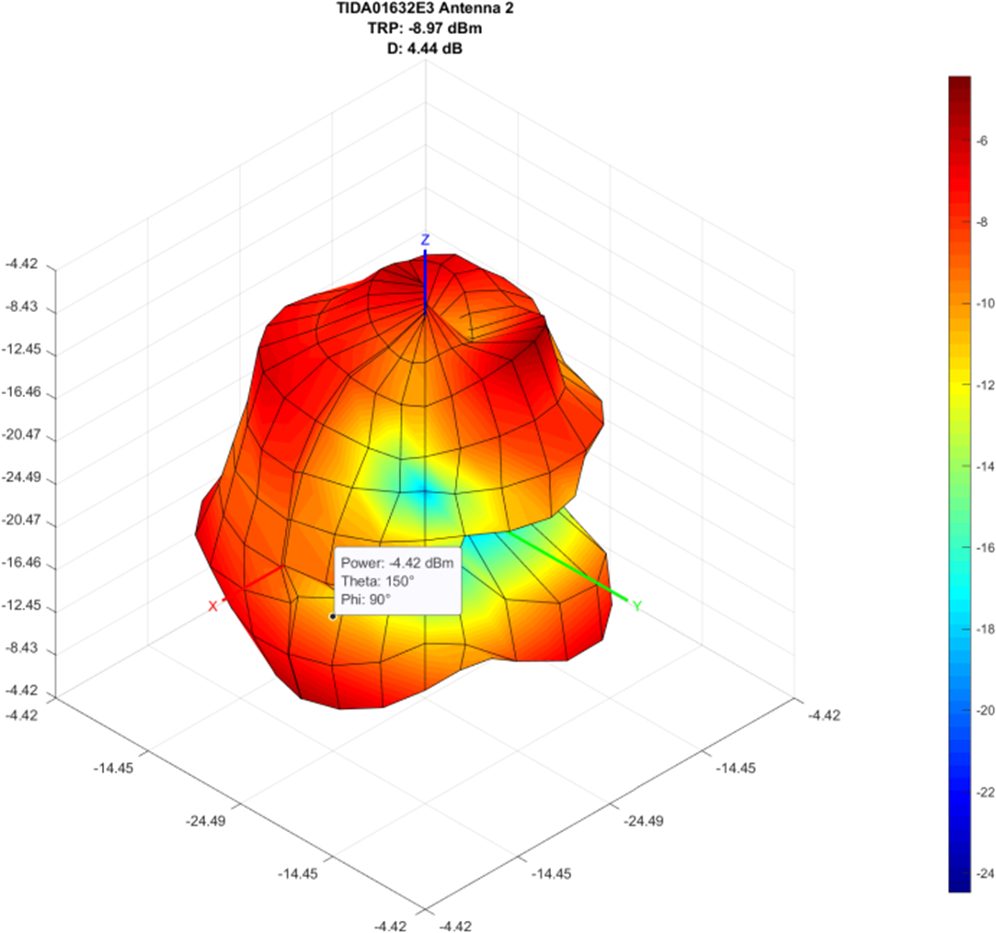 Figure 3-18 Antenna 2 TRP
Figure 3-18 Antenna 2 TRP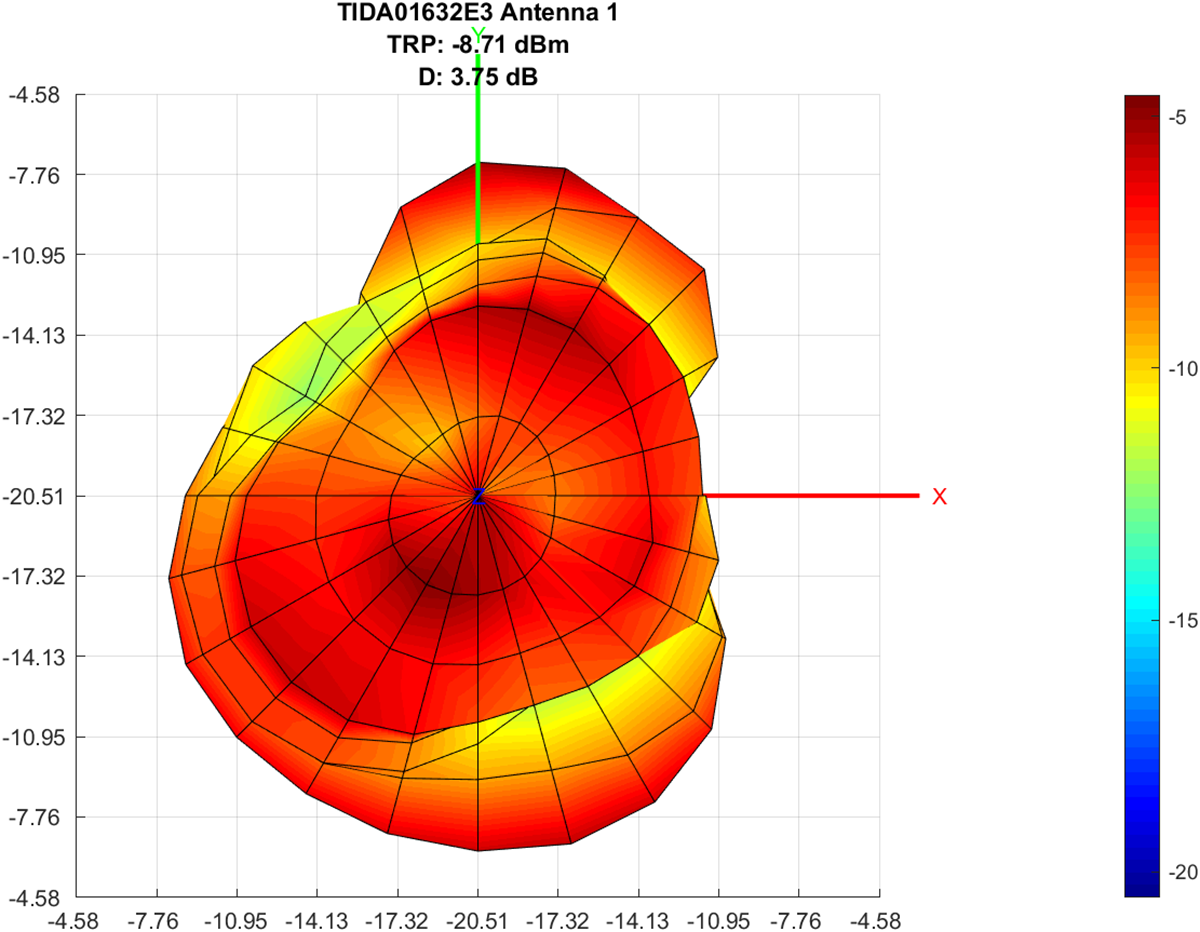 Figure 3-19 Antenna 1 TRP (Theta = 0,
Phi = 0)
Figure 3-19 Antenna 1 TRP (Theta = 0,
Phi = 0)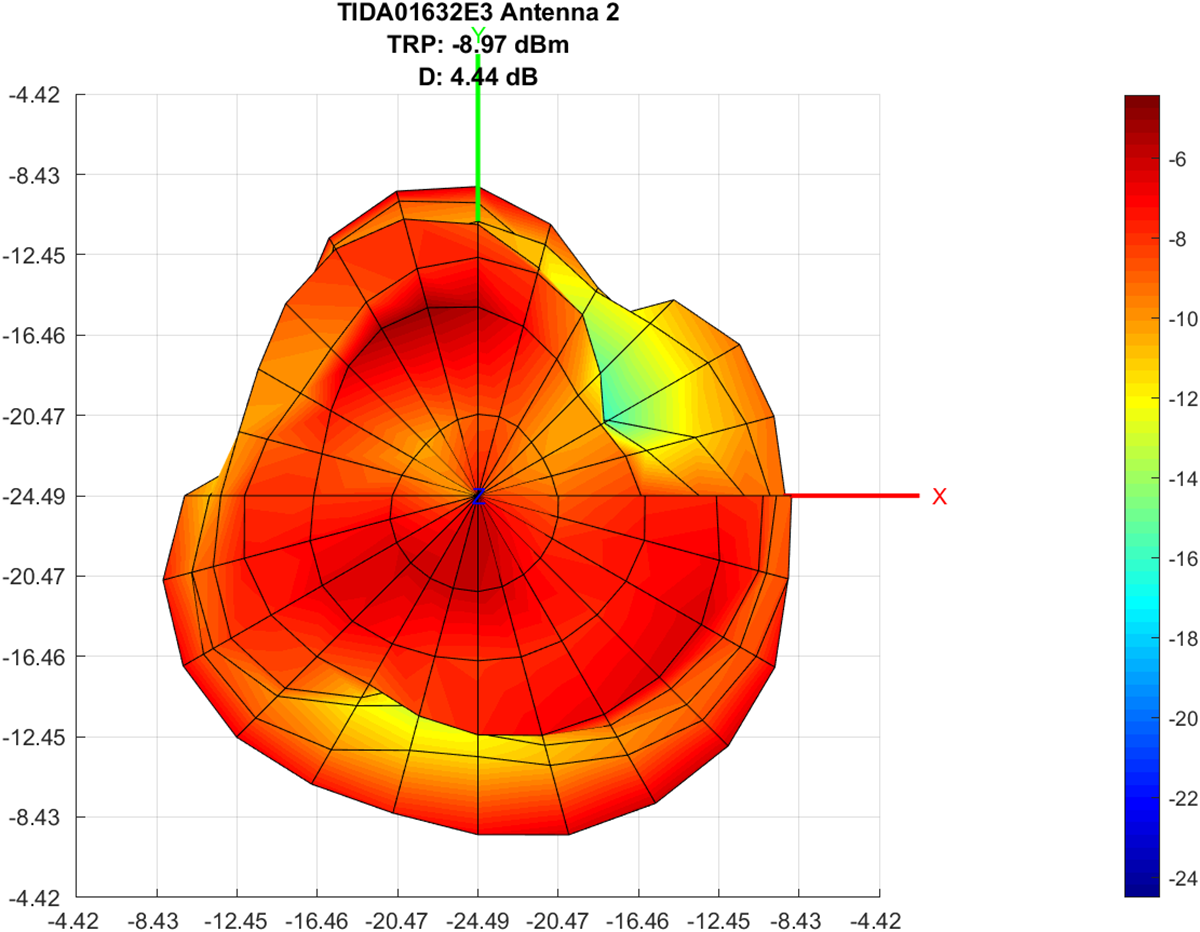 Figure 3-20 Antenna 2 TRP (Theta = 0,
Phi = 0)
Figure 3-20 Antenna 2 TRP (Theta = 0,
Phi = 0)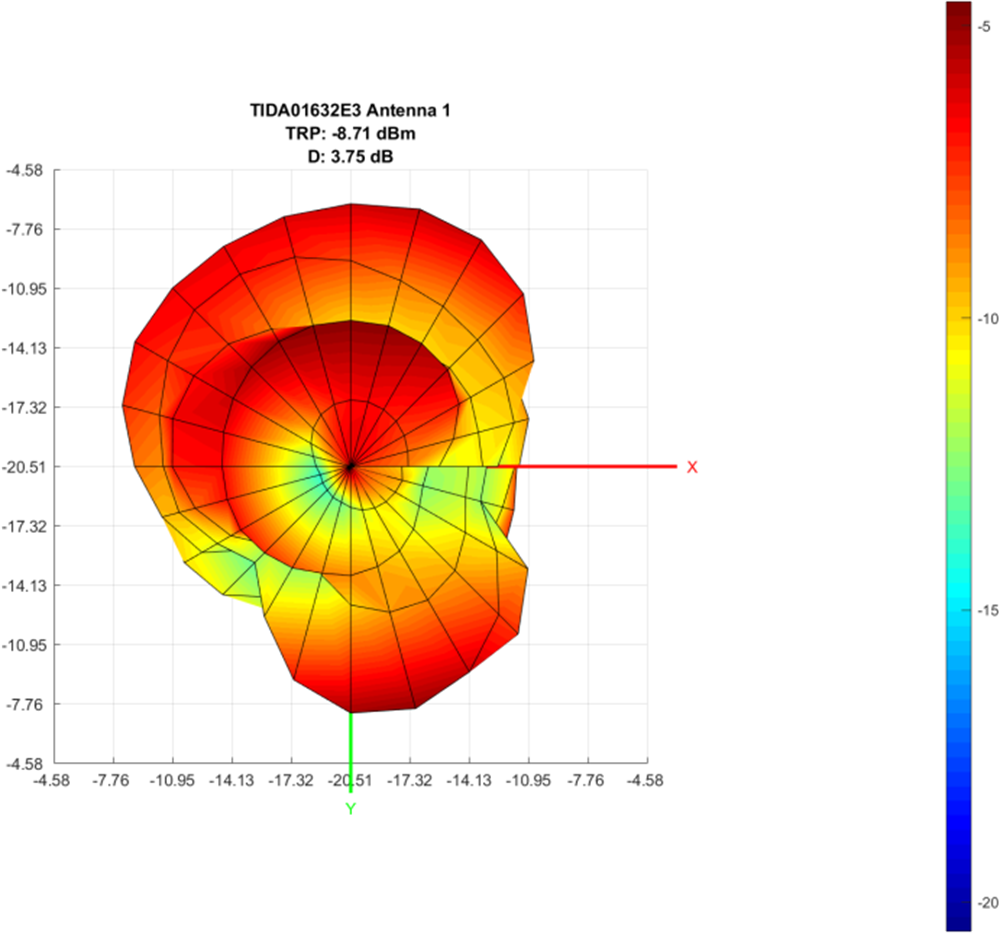 Figure 3-21 Antenna 1 TRP (Theta =
180, Phi = 0)
Figure 3-21 Antenna 1 TRP (Theta =
180, Phi = 0)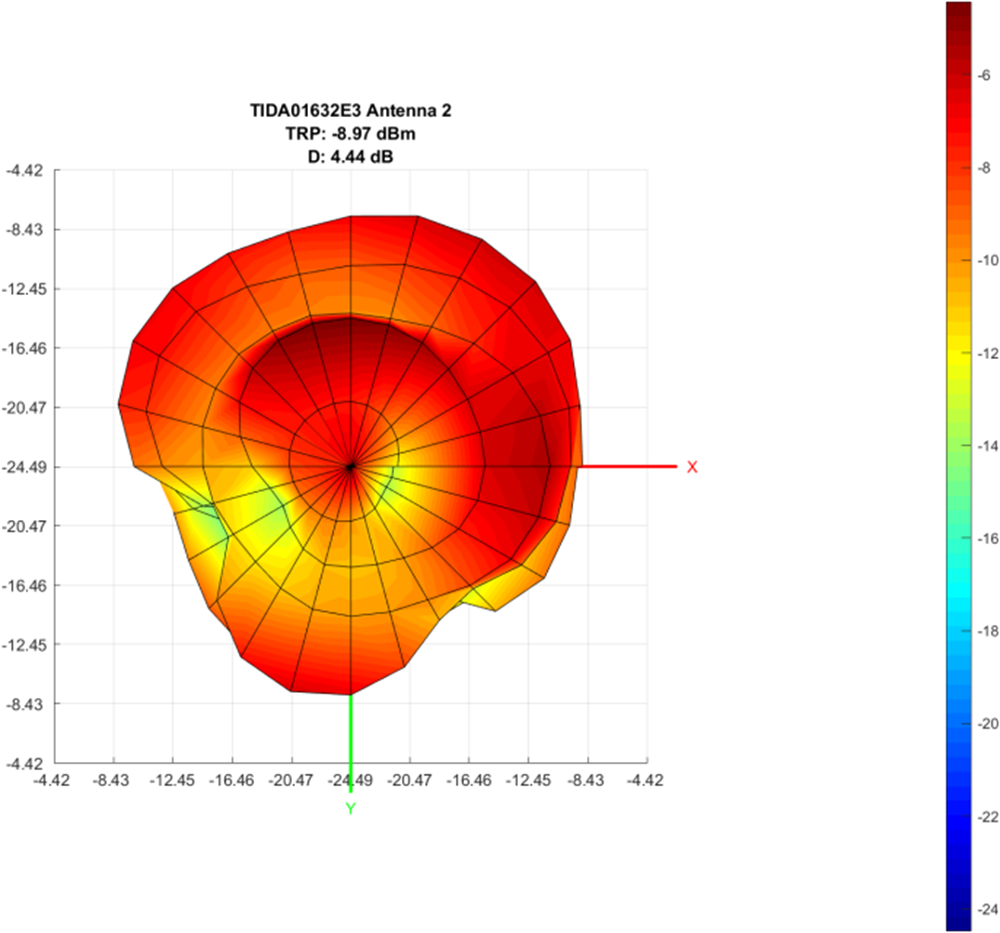 Figure 3-22 Antenna 2 TRP (Theta =
180, Phi = 0)
Figure 3-22 Antenna 2 TRP (Theta =
180, Phi = 0)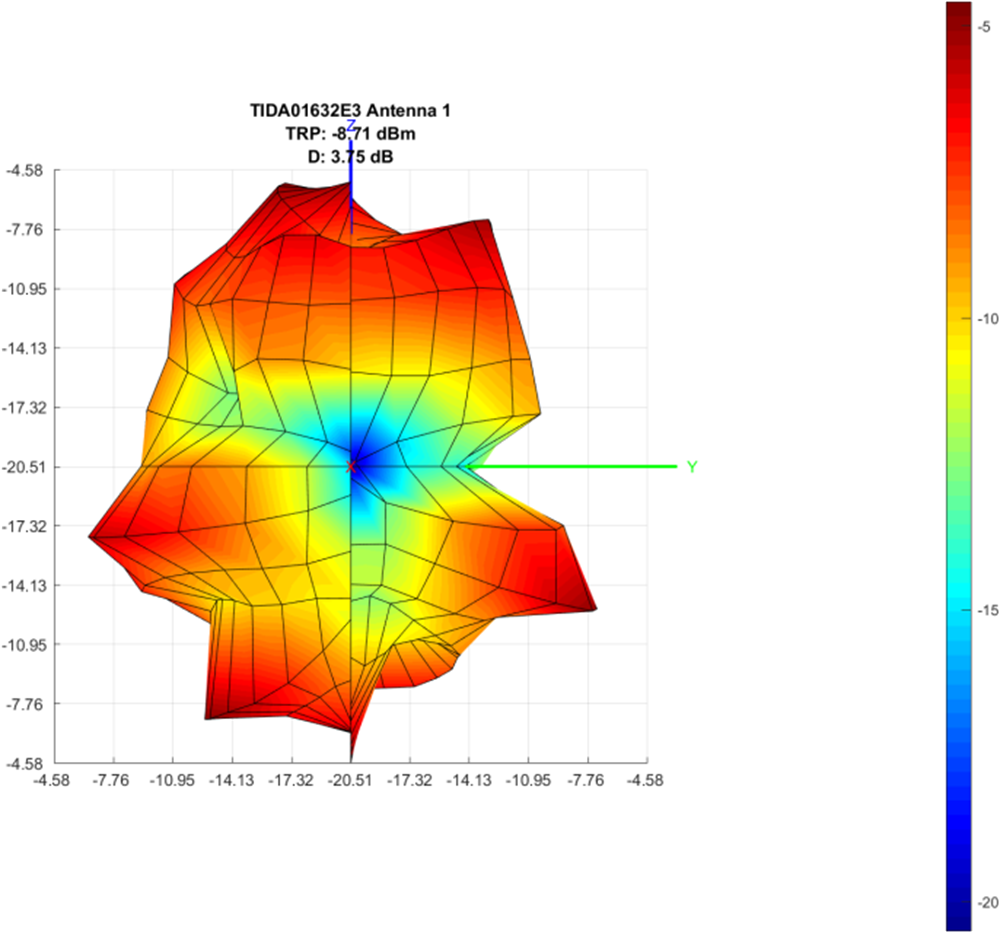 Figure 3-23 Antenna 1 TRP (Theta = 90,
Phi = 0)
Figure 3-23 Antenna 1 TRP (Theta = 90,
Phi = 0)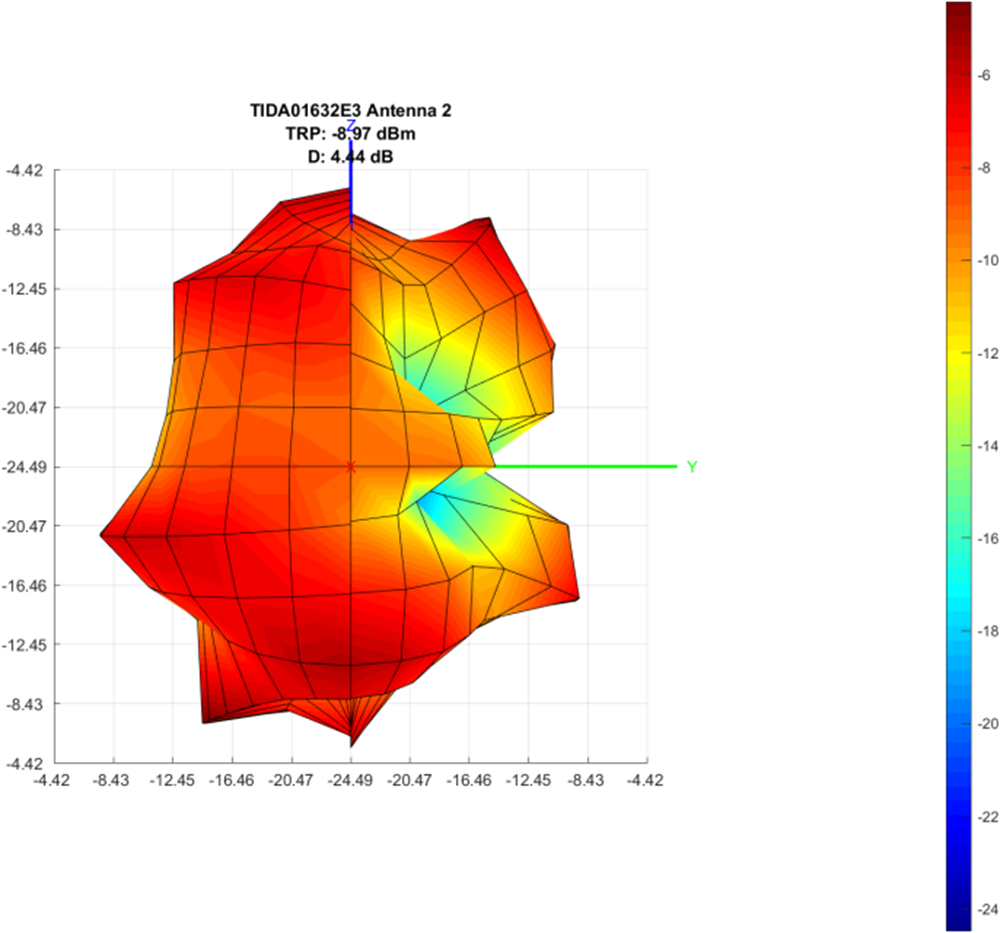 Figure 3-24 Antenna 2 TRP (Theta = 90,
Phi = 0)
Figure 3-24 Antenna 2 TRP (Theta = 90,
Phi = 0)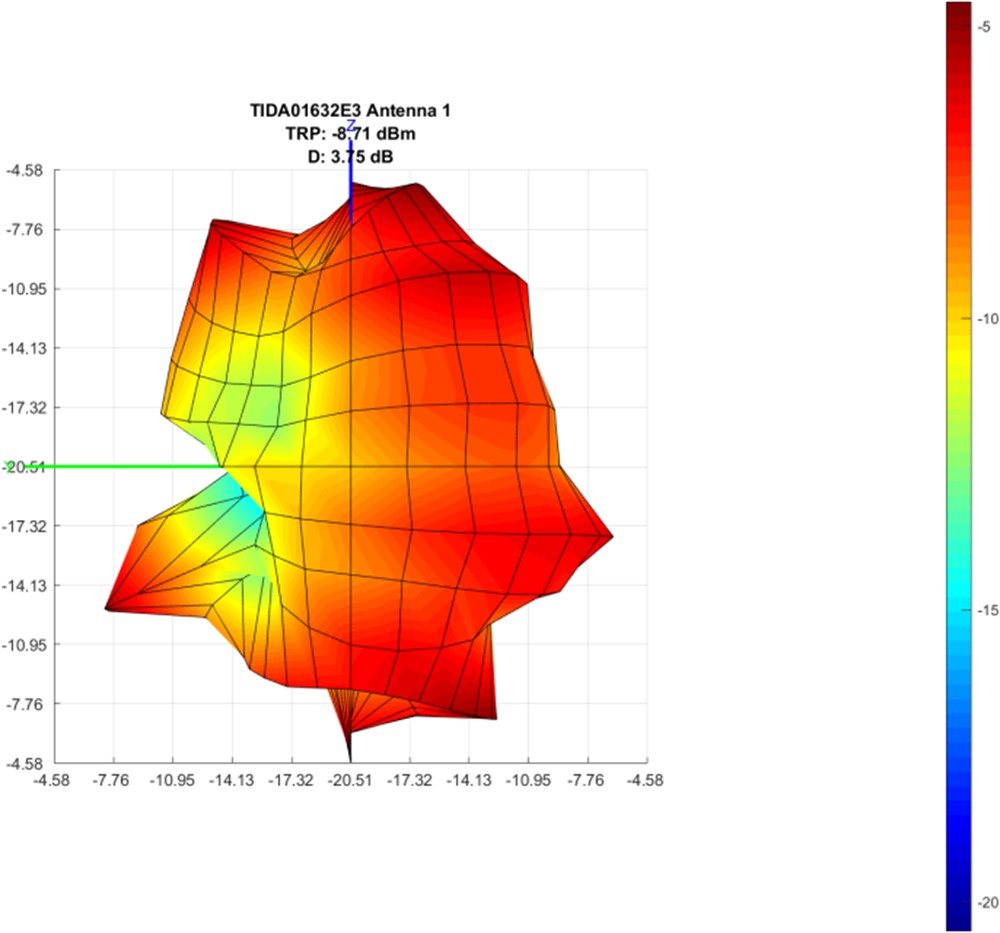 Figure 3-25 Antenna 1 TRP (Theta = 90,
Phi = 180)
Figure 3-25 Antenna 1 TRP (Theta = 90,
Phi = 180)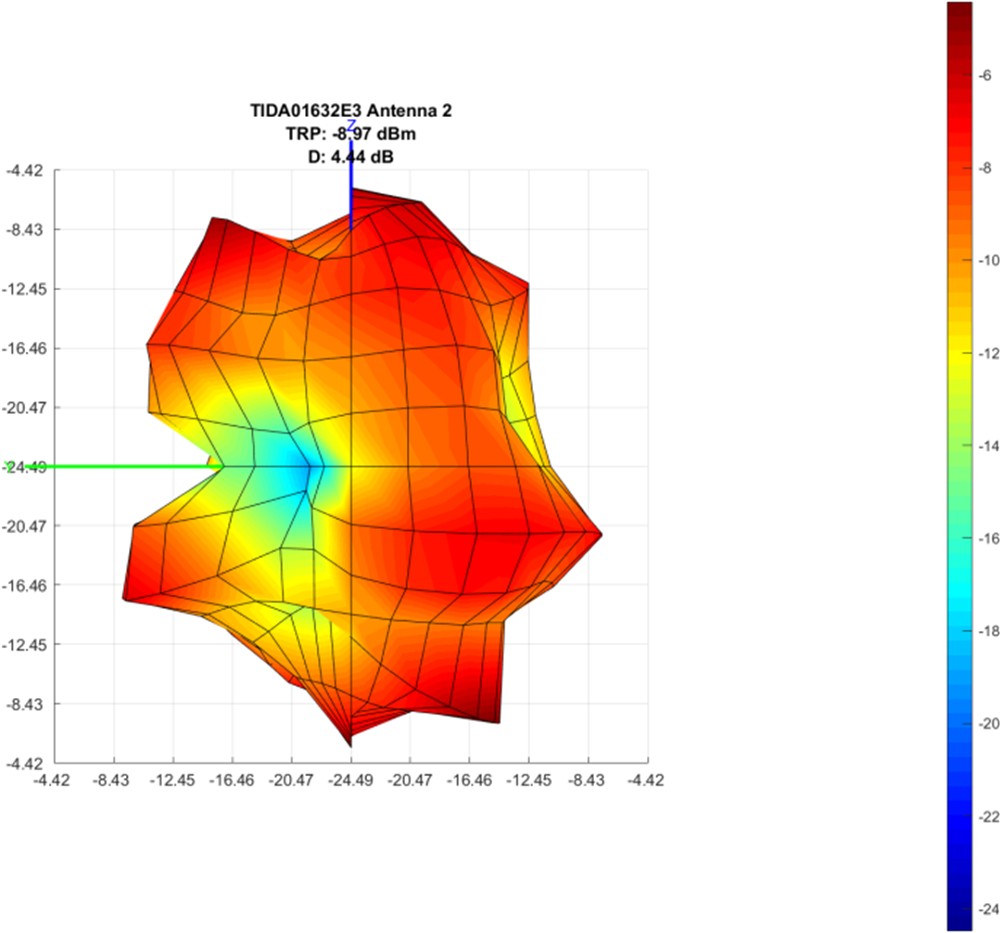 Figure 3-26 Antenna 2 TRP (Theta = 90,
Phi = 180)
Figure 3-26 Antenna 2 TRP (Theta = 90,
Phi = 180)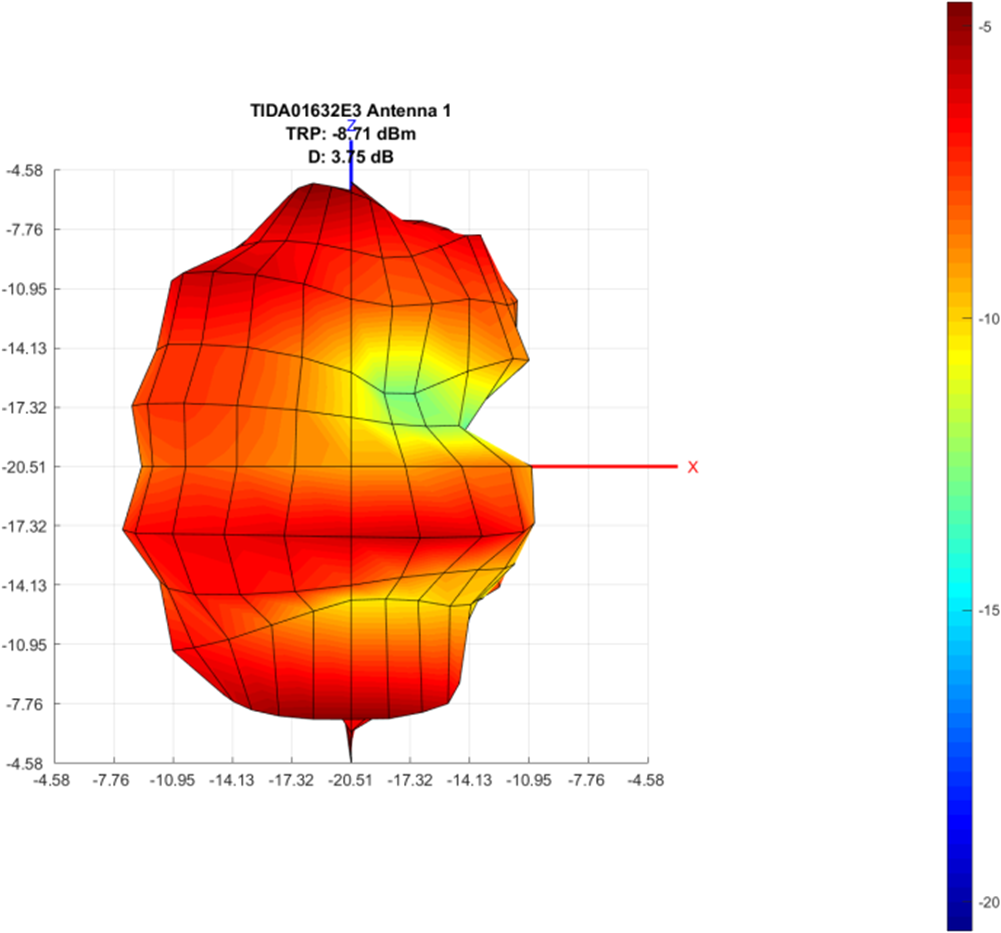 Figure 3-27 Antenna 1 TRP (Theta = 90,
Phi = 270)
Figure 3-27 Antenna 1 TRP (Theta = 90,
Phi = 270)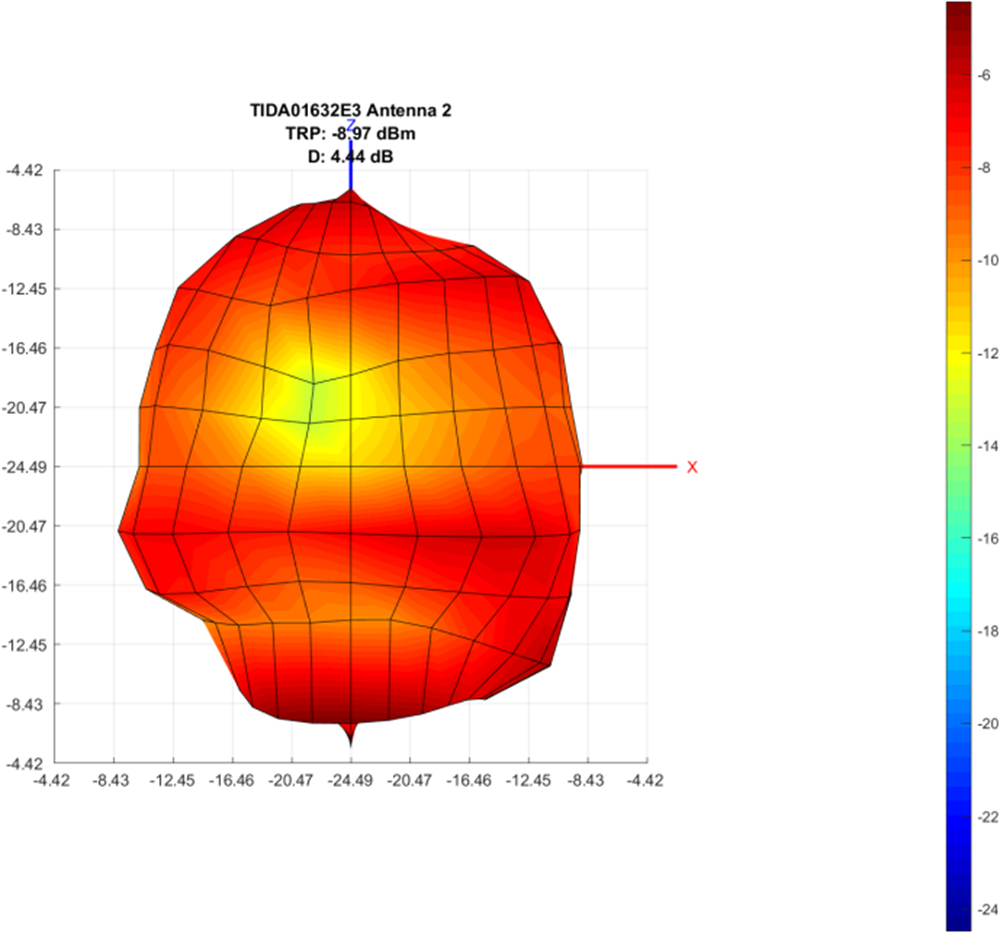 Figure 3-28 Antenna 2 TRP (Theta = 90,
Phi = 270)
Figure 3-28 Antenna 2 TRP (Theta = 90,
Phi = 270)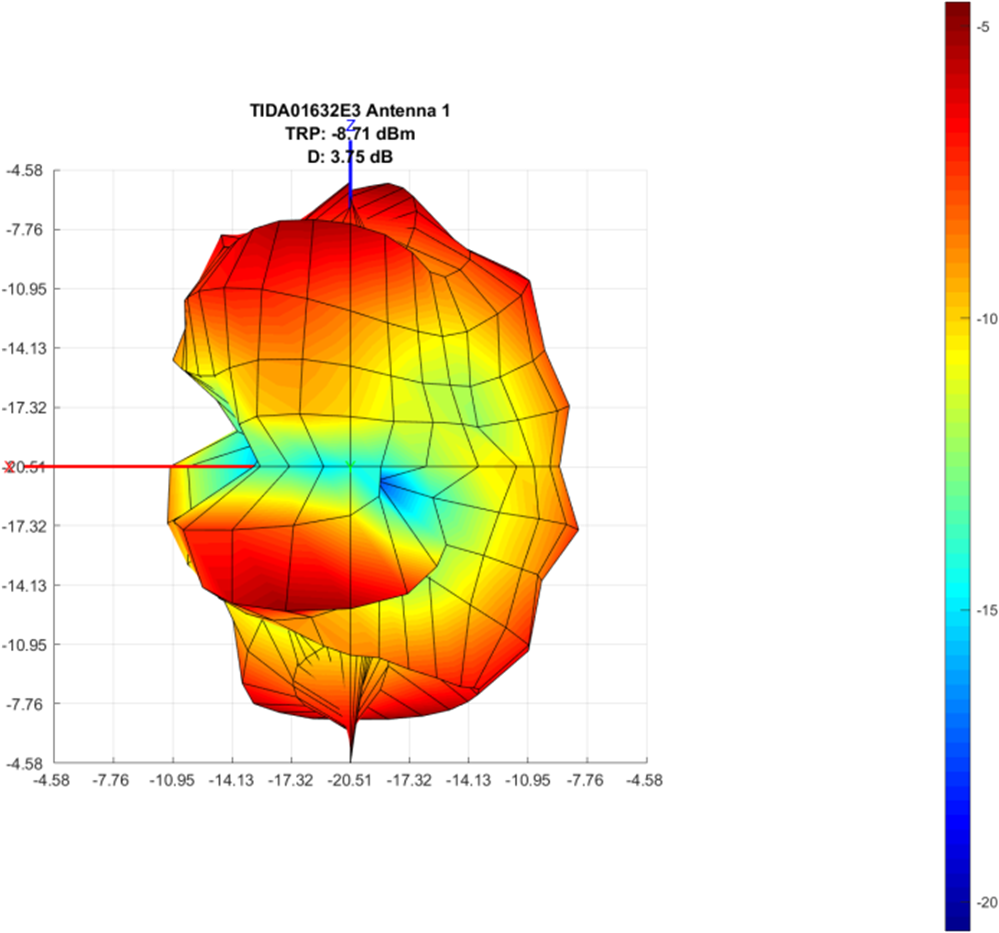 Figure 3-29 Antenna 1 TRP (Theta = 90,
Phi = 90)
Figure 3-29 Antenna 1 TRP (Theta = 90,
Phi = 90)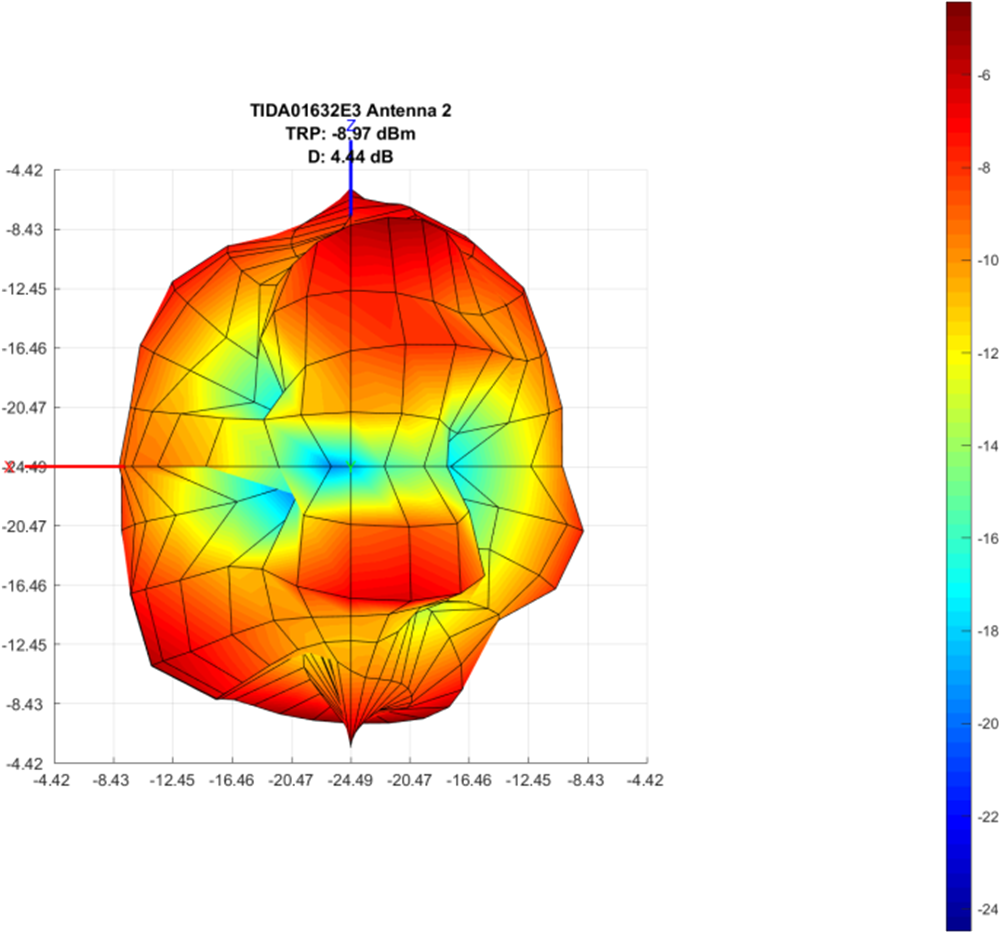 Figure 3-30 Antenna 2 TRP (Theta = 90,
Phi = 90)
Figure 3-30 Antenna 2 TRP (Theta = 90,
Phi = 90)The TRP was also measured with the TIDA-01632 PCB mounted on a metal stand with RF absorbing material (WaveX WX-A-010-12P) and tin plated copper foil (3M 1183) attached between the PCB and the metal stand shown in Figure 3-31. The added metal around the antenna drastically degrades the efficiency but ensures that no RF signals are received from the back side of the PCB. A measured TRP of around –23 dBm indicates an antenna efficiency of just 0.5%.
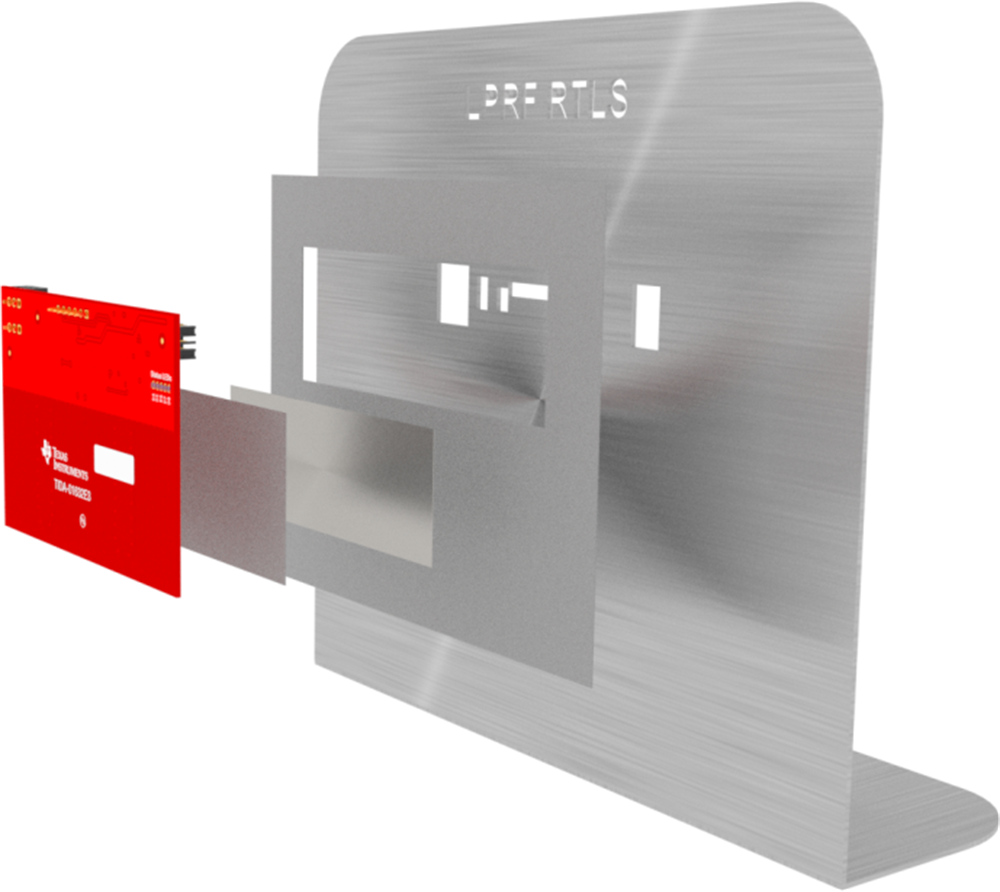 Figure 3-31 PCB + RF Absorbing Material +
Tin-Platted Copper Foil + Metal Stand
Figure 3-31 PCB + RF Absorbing Material +
Tin-Platted Copper Foil + Metal Stand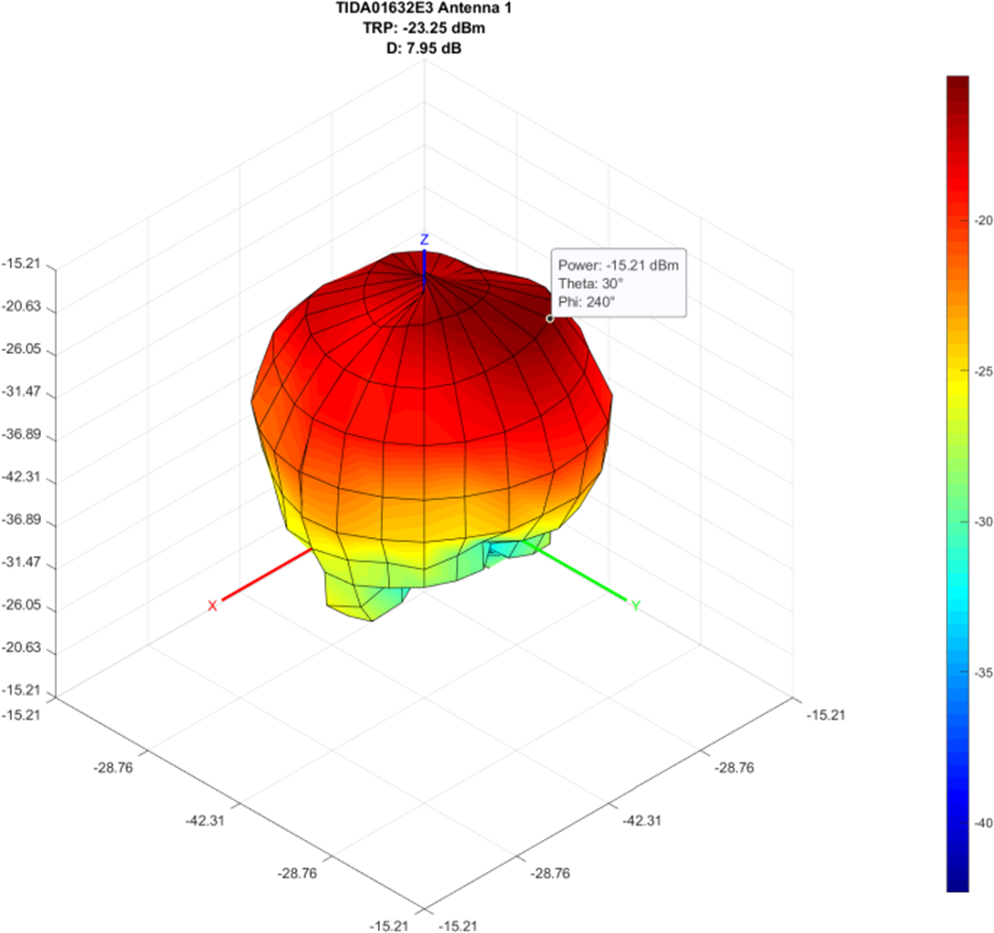 Figure 3-32 PCB + RF Absorbing
Material + Tin-Platted Copper Foil + Metal Antenna 1 TRP
Figure 3-32 PCB + RF Absorbing
Material + Tin-Platted Copper Foil + Metal Antenna 1 TRP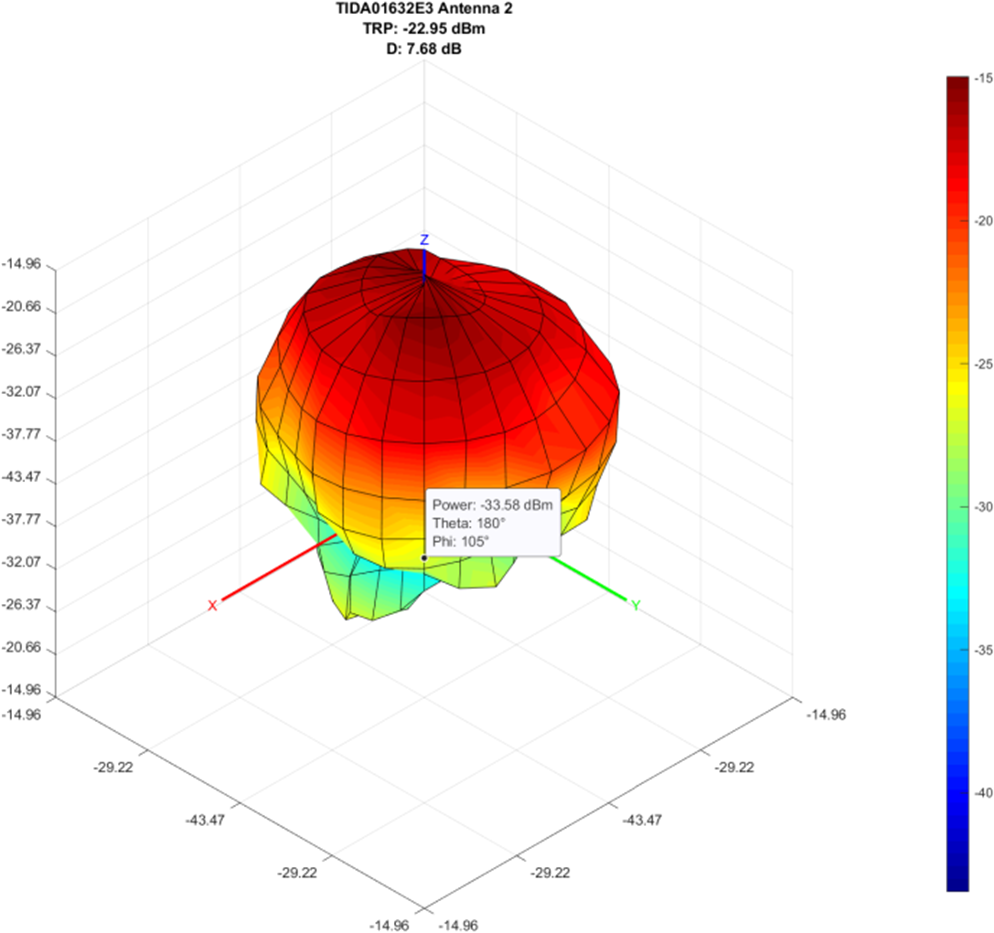 Figure 3-33 PCB + RF Absorbing
Material + Tin-Platted Copper Foil + Metal Antenna 2 TRP
Figure 3-33 PCB + RF Absorbing
Material + Tin-Platted Copper Foil + Metal Antenna 2 TRP